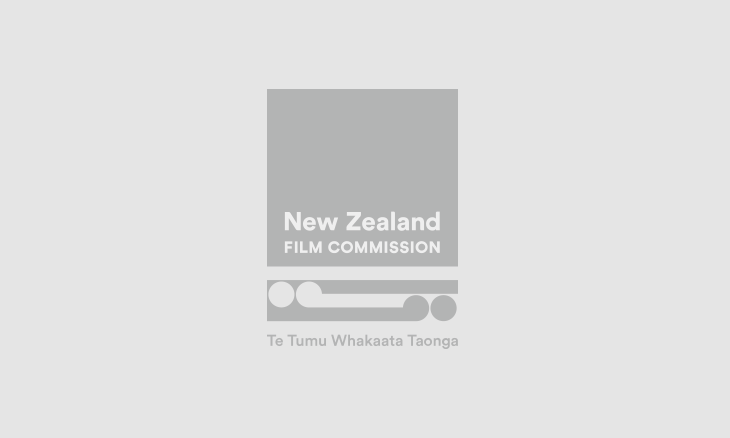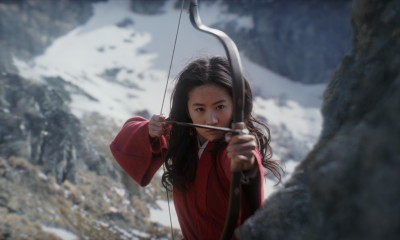(L-R): Ronal, Tonowari, and the Metkayina clan in 20th Century Studios' AVATAR: THE WAY OF WATER. Photo courtesy of 20th Century Studios. © 2022 20th Century Studios. All Rights Reserved.
“I think what audiences can prepare themselves for is the ultimate cinematic experience, a movie that reminds them of why the theatre-going experience is special. Everything we do on this movie is meant for the big screen, a 3D big screen, every shot, every set, every dramatic moment.”
Fast Facts
1,400+ New Zealand crew employed (over 5 years)
798 New Zealand extras
114 New Zealand stunt artists
46 New Zealand cast, 36 interns
174 sets
185 Main Unit shoot days
82 Second Unit shoot days
4,001 VFX
“What I'm most proud of is that the team here in New Zealand has proven that nothing is impossible.”
Thirteen years after Director James Cameron brought the world the ground-breaking Avatar, we return to Pandora for Avatar: The Way of Water. Live Action shooting for Avatar: The Way of Water took place in New Zealand. Wellington was the the main production base with studio facilities also utilised in Auckland.
The sequel begins to tell the story of the Sully family ten years on, and the trouble that follows them, the lengths they go to keep each other safe, the battles they fight to stay alive, and the tragedies they endure.
Directed by James Cameron and produced by Cameron and Jon Landau, the film stars Zoe Saldana, Sam Worthington, Sigourney Weaver, Stephen Lang, Cliff Curtis, Joel David Moore, CCH Pounder, Edie Falco, Jemaine Clement and Kate Winslet.
New Zealander Cliff Curtis co-stars as Tonowari, a leader of the reef people, or Metkayina clan, who inhabit the underwater region where much of the sequel’s action is set. And New Zealander Jemaine Clement plays Marine biologist Dr. Ian Garvin and the young actor Duane Evans playing Rotxo.
Cliff Curtis says he can’t wait for people to see the movie and experience it.
“You can create this miraculous thing which seems impossible when you are watching it and present it with such reality and depth and richness, it speaks volumes to how creative we are and how really brilliant the teams of people are here (in New Zealand) to support the vision of someone like James Cameron.”
Curtis says the film is a really emotional ride which he believes will surprise the audience. “The aesthetic, the world is intensely beautiful. It is so immersive it feels like you are actually there, sitting amongst this incredible world, you’re there with characters and creatures.”
Movies are ultimately about the close-up and as in the first movie, the technology used is once again pushing the boundaries. Avatar: The Way of Water uses two high-definition cameras and the data captured goes down to an almost pore by pore level to drive a higher fidelity performance.
“It's the first time you're seeing this technology used at this level. It's not a revolution. It's an evolution. And with each project, we look to create a bar. And then on the next movie, we look to surpass that bar.”
Wētā FX partnered with Lightstorm Entertainment collaborating on new technology and techniques to fully realise James Cameron’s vision. This is the largest VFX film Wētā FX has ever worked on, with a total shot count of 4,001 (including omits / final omits).
Some of the more advanced equipment the movie is using are the camera systems. They are specially designed 3D camera systems with brand new rigs. They are 4K, 48 frames per second capable systems that were specially manufactured by the highly creative and innovative team.
“And that's what we were able to find with our crew here in New Zealand. They are people who don't want to rest on their laurels of the past, they want to explore the potential of what is possible,” says Landau.
“One of the things that I have found here from the crew in general is filmmaking still remains a passion for the Kiwi crew. It's not just a 9 to 5 job, and that passion is both in the artistry that people apply to their craft, but also in the embracing of new technology and not saying, okay, this is what I know and this is what I'm going to stand and live by.”
“We came down here on the first Avatar. And we didn't know the Kiwi crew. And let's be honest, we came because of the incentive. We would not have come back but did for the crew that we met here, combined with the incentive.”
More than 1,400 New Zealand crew worked on Avatar: The Way of Water and its sequel over a period of three years. Many of the head of departments were New Zealanders who had worked on the very first Avatar, including Academy Award Winning Art Director and Production Designer Kim Sinclair (M3GAN, The Meg, The Last Samurai).
Highly skilled and experienced craftspeople were used to design and produce the props both within the production and with Wellington companies Human Dynamo, Rubberband and Wētā Workshop building anything and everything from futuristic weaponry to costumes and consoles, while internationally renowned boat manufacturers Yachting Development and Salthouse Marine in Auckland built the marine vessels.
“People oftentimes think with computer generated imagery, that you don't need to make them (props and costumes). If we want effects to look real, we need to give them something to ascribe to. So we would have these craftspeople both on the production and suppliers, manufacturing costumes, working on props. We came down here and we built a boat that actually has a thousand horsepower engines on it. And most of you’ll never know.”
Everyone who has ever worked with James Cameron will say there is no one more exacting about a design than James himself, because he is an artist. When he discusses a piece of set dressing, costume, set design, he doesn’t just talk about it he looks at it from every angle. Jon Landau says if it doesn’t look good, he drills down to why it doesn’t look good from an artist’s perspective and from a scientist’s perspective, because of course he is a National Geographic Explorer.
“He brings that sensibility to that prop. I always say when you deal with someone like Jim, it’s not good enough to have an opinion, you have to be able to articulate the reasoning behind your opinion.”

(L-R): Neytiri and Jake Sully in 20th Century Studios' AVATAR: THE WAY OF WATER. Photo courtesy of 20th Century Studios. © 2022 20th Century Studios. All Rights Reserved.
About the New Zealand Screen Production Rebate
The NZSPR for International Productions is part of the New Zealand Government’s screen incentives scheme, which includes the Post, Digital and Visual Effects (PDV) Rebate. Eligible productions can access a cash rebate on Qualifying New Zealand Production Expenditure (QNZPE).
Find out more here.
Synopsis
Set more than a decade after the events of the first film, Avatar: The Way of Water begins to tell the story of the Sully family (Jake, Neytiri and their kids), the trouble that follows them, the lengths they go to keep each other safe, the battles they fight to stay alive and the tragedies they endure.
Directed by James Cameron, Avatar: The Way of Water stars Sam Worthington, Zoe Saldaña, Sigourney Weaver, Stephen Lang, Cliff Curtis, Joel David Moore, CCH Pounder, Edie Falco, Jemaine Clement, Giovanni Rabisi and Kate Winslet. Screenplay by James Cameron & Rick Jaffa & Amanda Silver. Story by James Cameron & Rick Jaffa & Amanda Silver & Josh Friedman & Shane Salerno. The film’s producers are James Cameron and Jon Landau, with David Valdes and Richard Baneham serving as executive producers.
Key New Zealand HODs
Brigitte Yorke – Associate Producer / UPM
Richard Bluck – DOP
Joe Letteri – Senior Visual Effects Supervisor (Academy Award Winner for Avatar)
Lena Scanlan – Visual Effects Producer
Kim Sinclair – Supervising Art Director (Academy Award Winner for Avatar)
Melissa Spicer – Props Master
Vanessa Cole – Set Decorator
Sarah Rubano – Make up & Hair Designer
Bob Buck – Live Action Associate Costume Designer
Steve Ingram – SFX Supervisor
Dion Hartley and Jay Munro – Key Grips
Giles Coburn and Jo Bollinger – Gaffers
Tony Johnson – Production Sound Mixer (Academy Award Nominee for Avatar)
Kate Mulligan – Post Production Supervisor
Mike Hedges – Post Production Sound Mixer
Avatar: The Way of Water is in NZ cinemas on December 15 2022.






















































